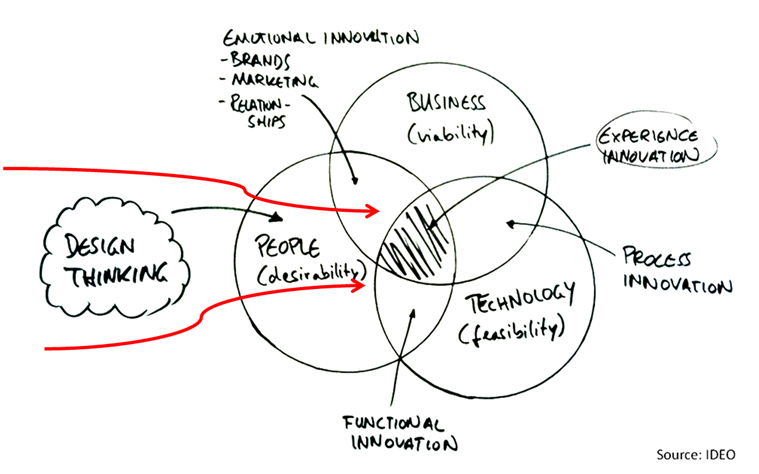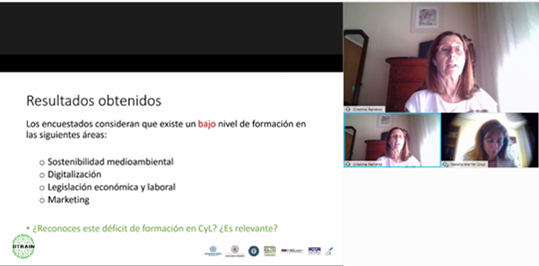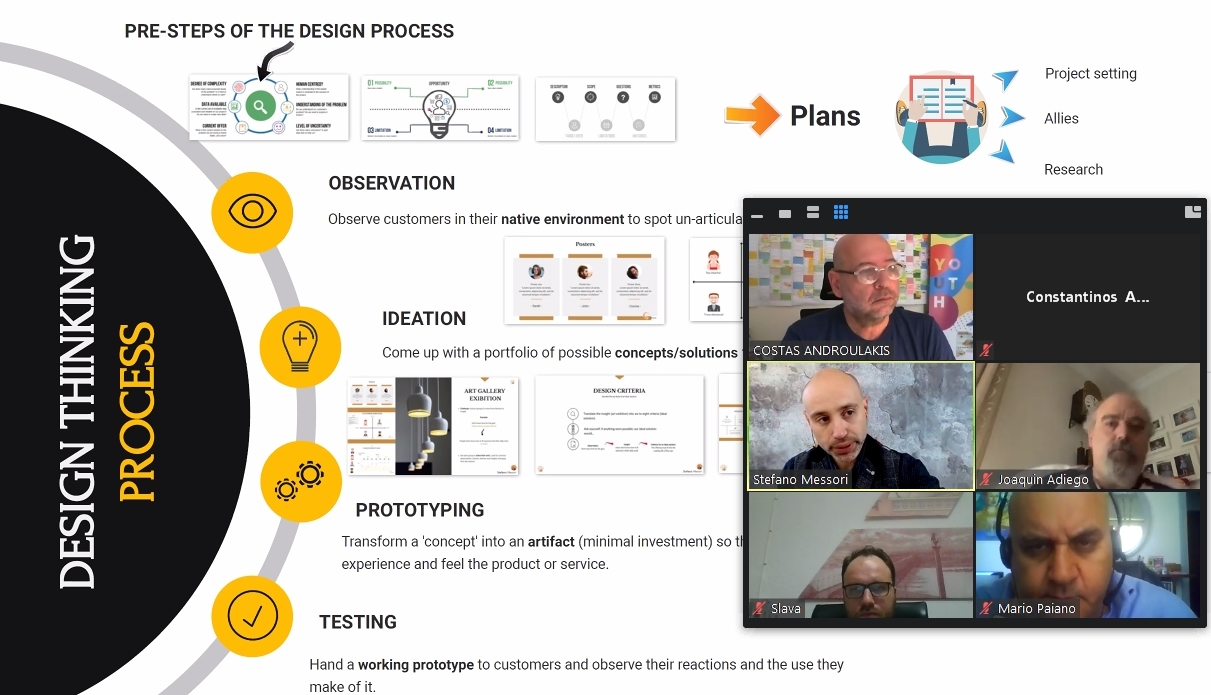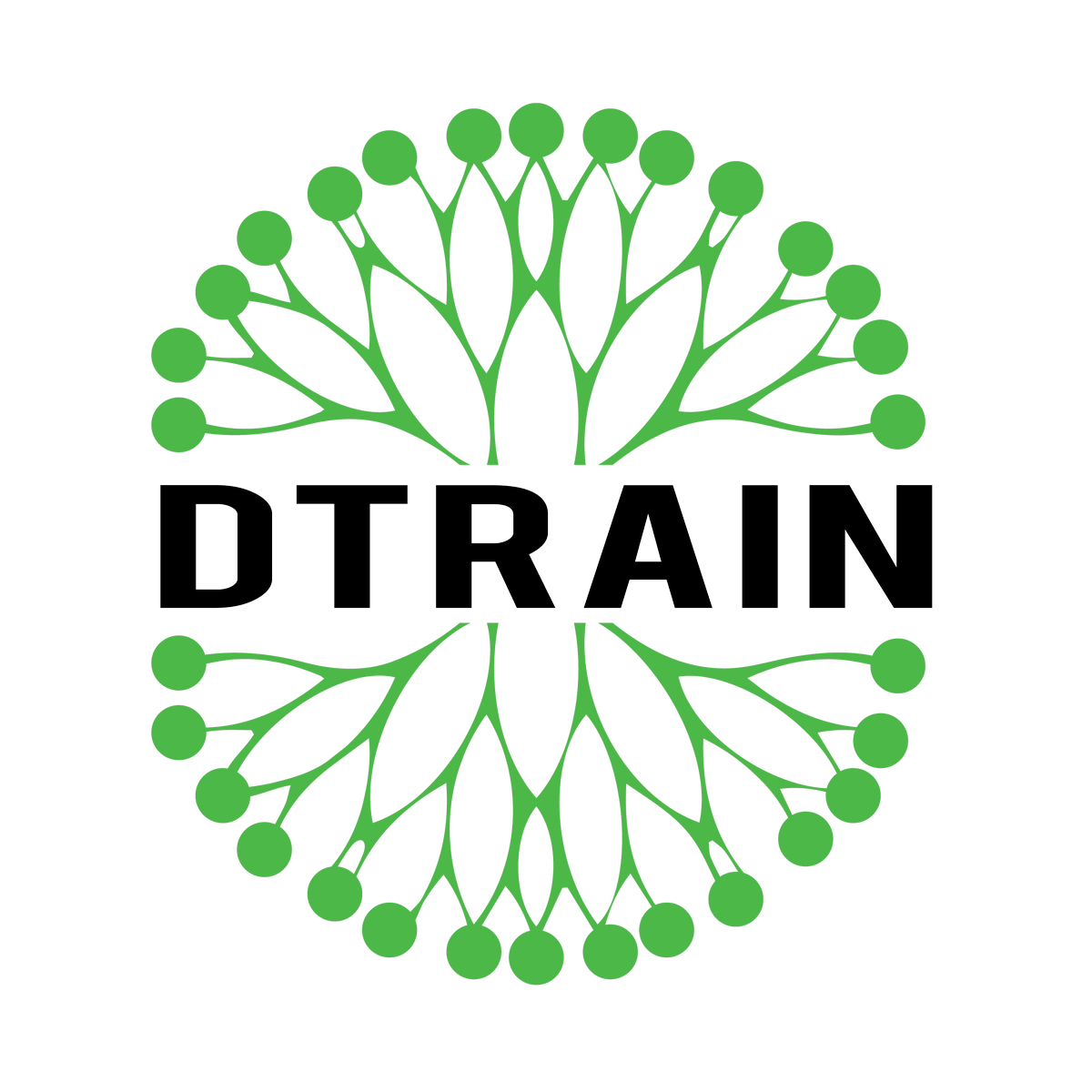
DTRaiN Newsletter #2 – EN
What you can find in this issue:
• What is the project DTRAIN
• NEWS from Greece
• NEWS from Spain
• NEWS from Italy
• NEWS from Germany
 WHAT IS THE PROJECT DTRAIN
WHAT IS THE PROJECT DTRAIN
Design Thinking for Entrepreneurship in Agri-food Sector: The European project DTRaIN, financed with European Erasmus + funds, has the aim of revitalizing the production in the agri-food sector, promoting the acquisition of high-quality skills for staff management and for entrepreneurs working in the sector.
Professionals working in the agri-food sector often lack the skills to strengthen the name and brand of local products and to face the challenge of a constantly evolving and highly competitive economic environment. The Design Thinking methodology has been used to revolutionize entire sectors and establish a competitive advantage for companies. Focused on listening, empathy, collaboration, and experimentation, Design Thinking can be applied in any field, for product development, for business planning, and beyond.
More specifically, the objectives of the DTRaIN are:
• Designing an IFP curriculum and developing training content for entrepreneurs in the agri-food sector based on the Design Thinking methodology.
• Design an innovative educational model based on a student-centered approach, using the Flipped Classroom model
The project DTRAIN is developed by a partnership from four countries: Greece (Regional Unit of Rethymno – project leader, Mediterranean Agronomic Institute of Chania, European Center in Training and Employment), Spain (University of Valladolid), Italy (Centro Machiavelli), and Germany (Haftungsbeschränkt).
The DTRAIN project started in September 2019 and it will end in April 2022.
NEWS FROM GREECE
Applying the Learning-Outcome-based framework in achieving a professional qualification in DTRaIN project In the “DTRaIN” project, a “qualification profile” that of the “Design strategy analyst” in agri-food sector businesses, will be developed.
The DTRaIN course curriculum will be developed on a Learning outcomes-based structure, where the Design Thinking needed competencies, will be directly linked to specific Learning Units. Every Learning Unit will be credited ECVET points.

Young learners in agri-food social enterprises – ECTE
The VET systems in Europe, are facing challenges due to the fast-changing skill needs of the labor market, and to the expectations of individuals. The “shelf-life” of skills is becoming increasingly short. VET qualifications need to meet the highest quality standards and can be built on, refreshed and renewed, in order to maintain their relevance in these rapidly changing economies. The shift focusing on learning outcomes is an important facilitator of change. The identification of the specific “Learning Outcomes”, is the core of the European credit system for VET (ECVET) for promoting transfer and accumulation of skills and competencies across Europe. According to the “Defining, writing and applying learning outcomes” of CEDEFOP, 2017, “the Learning-outcomes-based frame-works, of what a learner is expected to know, be able to do and understand at the end of a learning procedure, play an increasingly important role in efforts to improve the quality and relevance of education and training in Europe”. Learning outcomes statements help to clarify programs and qualifications intentions and make it easier for those involved – learners, teachers, or assessors – to work towards these expectations. The increased transparency offered, provides an important reference point for policy-makers, making it easier to judge the match between society’s needs and the programs and qualifications offered within education and training.
Learning outcomes for different purposes
Learning outcomes statements are used in the process of qualification of professional profiles, setting qualification Frameworks for a wide range of purposes,.
Qualification profiles and/or standards
A “professional Profile”, is the formal outcome of the assessment and validation process of achieved Learning outcomes, that have been grouped in Units each one representing a specific qualification. Therefore, each “professional Profile”, consists of a specific number of “of learning UNITS’, each one a “qualification”. The acquisition of each of the qualifications nationally or internationally is validated with the help of ECVET, through the assessment of the achieved learning outcomes of each learning UNIT.
Qualification standards define the expected outcomes of the learning process, leading to the award of a full or partial qualification. In vocational education and training, profiles or standards normally answer questions such as ‘what does the student need to learn to be effective in employment’ and ‘what does the learner need to learn to become an active citizen, supporting basic human and democratic values?’ A qualification standard is not exclusively about promoting skills relevant to the labor market but must address a broader set of competencies relevant to life and society in general. It must also consider the changing nature of the labor market and society and clarify the role of transversal skills and competencies, for example, related to communication, social skill, and problem-solving.
Qualification Frameworks
Qualifications frameworks play an increasingly important role at the international, national, and sector levels in Europe. Learning-outcomes-based frameworks seek to increase transparency and allow for a comparison of qualifications across institutional and national borders. A qualifications framework classifies qualifications according to a set of criteria for specified levels of learning achieved. It aims to integrate and coordinate qualifications, as well as improve the transparency, accessibility, and quality of qualifications in relation to the labor market, education, and training system, and civil society. (The European Qualification Framework February 2018)
Occupational standards
Occupational profiles or standards (5) are normally set outside the education and training system, by labor market stakeholders, but can have a significant impact on the way learning outcomes statements are defined and written.
Occupational profiles of standards specify ‘the main jobs that people do’, describing the professional tasks and activities as well as the competences typical of an occupation
Use of Learning Outcomes in the DTRaIN curriculum
In the “DTRaIN” project, a “qualification profile”, that of the “Design strategy analyst” in the agri-food sector will be developed. The DTRaIN course curriculum will be developed on a Learning outcomes-based structure, where the Design Thinking needed competences, will be directly linked to specific Learning Units. Every Learning Unit will be credited ECVET points.
NEWS FROM SPAIN
Sales and marketing are important in the sense to use IT and social networks to introduce the products to the consumers in a different way. The agrifood sector needs management of teams (vertical and horizontal) as well as specialised personms to manage the teams they work with.
The team from Spain conducted an interview with the CEO of Vitartis in May 2020. Vitartis is an association of the food industry of Castilla y León and their mission is to increase the competitiveness of the food industry of Castilla y León. This association represents 3.814.900.000 of turnover, 11,200 employees, and 47% of the sector in the region. We started the meeting by presenting the objective of this interview to Cristina. She agrees to record the interview. We used a PowerPoint presentation to address the main topics and results of the questionnaire that we sent within the DTrain project to collect information on training issues that interest or concern food company’s employees.

From those specific results, we started the conversation with her. Related to the sample, she claimed that it was not very representative in terms of the number of respondents who considers very low. She thinks that the official programs that institutions offer are not updated as desired and therefore she considers that could be a reason for respondents to evaluate that there is low training in terms of digitalization. Related to sustainability, she considers it a very important topic for companies in terms of the consumer who is very demanding, they need to have deep knowledge in terms of what to do or not to do and in terms of how to develop environmental sustainability and control. She considers that each sub-sector is very different in terms of the need for training in areas such as energy efficiency, water efficiency, resources efficiency, waste (reuse, R&D, etc.) Related to economic and labor legislation, she told us that those two legislations are not something identified by Vitartis, instead, she would include the environmental, health safety, and quality legislation. She recognizes that legislation is changing a lot and it is a high amount of laws and regulations to consider in the agrifood sector. Vitartis in collaboration with BOE, had elaborate a unified code of legislation where all the legislation related to the agri-food sector can be consulted and it is updated automatically when a new law or regulation related to the sector appears. She pointed out that she considers that those three topics (maintenance, production, and quality, prevention of occupational risks, sales and marketing) need to be related to the previous one, that is, digitalization and sustainability. Sales and marketing are important in the sense to use IT and social networks to introduce the products to the consumers in a different way. She considers that she would include the management of teams (vertical and horizontal). She considers that the agrifood sector needs specialized technicians but also with capabilities to manage the teams with whom they work. She does not think that coronavirus is going to change the way the sector is working, n plan and land production they need people to be physically there. IT is the one that is changing the way of working. Maybe coronavirus is accelerating this process.
Related to the most important professions considered by respondents (technicians in management, sales, marketing, and commercialization; Food quality and control technicians; Technicians and the technicians in logistics, maintenance, machinery), she agrees with this general opinion but she thinks another profession is missing, that is the IT professionals. IT workers need to work close to the rest of the workers. IT is needed everywhere to minimize errors and to facilitate that the different areas of the company work together and no isolated. People that the agri-food sector needs are people that understand the sector from the bottom to the top.
She agrees that the trends that can have the most influence on the future are: Introduction of new technologies in the company, Improve entrepreneurship, marketing, and sales techniques. She confirms that IT is key in the agrifood sector. The problem is to understand what the company needs about IT and innovation in the areas that the company will benefit from this IT. For her innovation is the most important topic of the future and she considers that the compromise of the company with the environment, society is very important for the agri-food sector.
She thinks that technicians are very aware of the importance of dealing with consumers to ensure product safety and preventing food fraud, circular economy, quality brands (improve visibility and sales). She thinks that in Castilla y León, companies are very good at product safety and preventing food fraud. Related to quality brands, she claims that the companies associated with Vitartis do not benefit from them as Tierra de Sabor. They do not need those brands. They need more governmental support promoting the brand Spain put of the country.
Finally, related to the method of teaching, she thinks each professional has his/her own expectations to receive practical training that she considers essential: manipulate, simulate, group, and teamwork. She thinks that professionals prefer regular training because they think of promotion in the same or in another company. So, they need the training to be official. In fact, she told us that in the agrifood sector, companies are very used to project management. So, training based on project-based learning is very convenient for them.
NEWS FROM ITALY
The agrifood sector in Toscany, lacks professionally trained persons in marketing, which is the Achilles’ heel of the companies.
The first part of the DTRAIN (Design Thinking for Entrepreneurship in Agri-food Sector) project took place from May to July 2020 with the realization of 4 interviews and a workshop with agri-food professionals, to understand the real needs of this sector and to create a training course for workers in this field that is going to fill the gaps in the territory.
The first step in understanding the needs of the agri-food sector is to determine the context in which companies operate. In Tuscany, as in most of Italy, firms are generally two-hectare companies with no employees. In this regard, it is not a coincidence that the adjective “multitasking” has been used over and over to describe the typical Tuscan farmer and his work. Farmers must be equipped with multiple knowledge, from a meteorological or a mechanical point of view to an agronomic, botanical, chemical preparation, and managerial or financial too. For this reason, each company underlined as extremely important the ability to create a network and to promote synergies among farmers. Another need of the agri-food sector is a well-trained staff in European and EU fund management as well as greater use of counseling by farmers. Many interviewees highlighted that the sector needs skills and competencies in administration and management.

Talking about the effects of the recent health crisis, many pointed out that the need to diversify their business strategies is very important. For example, the companies that over the years have modified and expanded their selling channels, both on-line and for local markets, have continued to work and trade.
What emerged from the online sessions is a key interest of entrepreneurs in marketing, that it is the real Achilles’ heel of the companies operating in the agri-food sector. The sector lacks professionally trained figures in this field and, at the same time, the market is very competitive. Participants pointed out their companies may need digital marketing training and has been repeatedly named the word “social-media manager”.
Regarding maintenance, when entrepreneurs need specialized works or intervention, they are forced to call the manufacturer of the machinery in question. Almost the same can be said regarding health and environmental issues and legislation.
Concerning the development of the course for agri-food professionals, interviewees highlighted that the best option could be a kind of teaching where theoretical training is strictly connected with practical activities to be conducted outside the traditional classroom; any training must have a strong orientation towards the practical dimension. Participants showed to be very interested, above all, in the Flipped Classroom, the Project Base Learning (PBL), and in any other methodologies focusing on teamwork, to promote networking among both farmers and agri-food companies.
NEWS FROM GERMANY
Design thinking overview
In a fast-changing world, this also includes language skills, entrepreneurial mindset, critical thinking, and creativity, as well as forward-looking skills in fields that are strategic for smart economic and social development.

July 2020, workshop in Design thinking for project partners by Stefano Messori, LDI-Berlin
Professionals working or want to be engaged in the agri-food sector lack the skills needed in facing the constantly changing and highly competitive economic environment. The DTRaIN Project, that is financed by the Erasmus+ program of the European Commission, has as the objective to revitalize the production in the agri-food sector of partners regions, by promoting the acquisition of high-quality skills for managing staff and Design thinking is both a method and a mindset and assists organizations to innovate sustainably. People, the staff of an organization and their ability to think creatively are the most valuable assets for any design thinking process. After a long time, finally, design thinking is now entering the world of business and contribute to its sustained success.
Not to be confused with ‘industrial design’ design thinking focuses more on the people to serve and their un-met and un-articulated needs rather than the product itself. Design thinking invites a team within an organization to walk a mile in the customers’ shoes and look at the world from their perspective. Design thinking reminds us that developing empathy is a necessary skill for the success of any new business innovation initiative.
The entire flow of design thinking is generally broken down into four phases:
• Observation
• Ideate
• Prototype
• Test
In the Observation phase, the design thinker puts himself or herself into the shoes of the end-user and tries to understand the needs of the customer (empathize). A lot of interviews, field visits, etc. are required for gathering the information on the requirements. This phase has the customer directly involved in the design thinking process. Once the requirements are clear, the problem definition is framed (Define).
In the Ideate phase, a design thinker brainstorms on the ideas suggested by others and also brings forward his/her ideas. The ideas are not tested on the grounds of feasibility or viability but on their potential to impact the user experience. The influx of ideas is represented as a mind map or as a storyboard or a document.
In the Prototype phase, a design thinker focuses on testing the ideas on the grounds of feasibility and viability. The unfeasible ideas are discarded and the feasible ones are converted to prototypes. The process of prototyping helps the design thinker to understand the issues related to an idea, which were never thought of before. This helps the team of design thinkers to come up with the most feasible prototype and decide the best solution at hand.
Moreover, the customer is directly involved in this phase and its feedback is critical for the design thinkers.
In the Test phase, the prototype or the model is handed over to the customer and the customer experiences it completely on a full scale. The feedback from the end-user decides whether the solution suggested by the design thinkers has been fruitful or not. If the end-user does not approve of the solution, then the entire process has to be iterated. The concept of iteration is hence central to the process of design thinking.
Design thinking not only helps to come up with innovative solutions but also helps to address the exact problems faced by the customer and target the customer’s requirements in the best possible manner.




